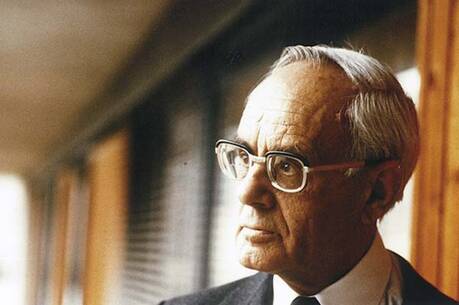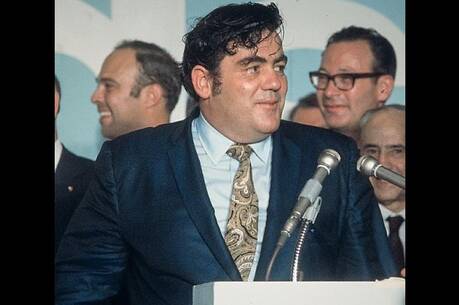Life on the Line
Suicide is a major mental health problem that touches all our lives. The incidence of suicide is frighteningly highthere are few among us who do not know a friend or family member who has either attempted or committed suicide, and no one of us is immune from its reach. We have much to learn from those who have experienced suicidal urges and have survived to tell us something about their brush with self-murder.
We have in these three volumes a triptychreflections of three people who have walked in the shadow of lifelong depression and have ventured all too close to the perilous brink of suicide. The three provide the reader with divergent testaments to their individual strategies for gaining mastery over their depressions and suicidal impulsesone by telling the story, another by creating a valuable career of overcoming depression and suicide for herself and others, and the last by declaring his victory over death by killing himself.
To examine the separate panels, Smith’s account is a rambling discursus on his struggles with depression and suicidea sort of "my life and times with Zoloft." He was dissatisfied with Zoloft and with psychiatristsnot terribly surprisingly, since neither antidepressive medications nor psychiatrists are able to bat 1,000 in this game. The author is learned and thoughtful, but I did not find the narrative very gripping. Part of his odyssey included turning to religion for solace and surcrease of his painto all kinds of religious viewpoints. The results, as far as I could see, were ambiguous. Happily, he did find his way into psychotherapy, which seems to have helped some. Happily also he has so far survived.
Jamison’s effort is more specifically a study of depression and suicide. She writes as a physician and psychiatric researcher on the subjecta perspective more oriented to facts and observations than personal impressions. However, her own struggles with bipolar disease and her brushes with suicide lend the work a quality of familiarity with the topic that contributes an added degree of authenticity. Much of the book is given over to facts about depression and suicide, biographical sketches of noteworthy suicides, statistics, details of the near- and completed suicides of others. The emphasis in the first half of the book is on the incidence and phenomenology of suicide and depression. These chapters seem to have been written for a lay audience in an effort to inform and increase public awareness of and sensitivity to the problem of suicide. The chapter on treatment adopts a more professional tone, apparently addressed to a more professional audience, but dealing with matters of drug management and therapy that would have little interest to the lay person. This focus is a puzzling feature of the organization of the book.
The notes provide copious references to her sources in very small type, but there is no way to connect the notes to the textno designated footnotes, just page references. Some sections of these notes are quite lengthy, providing much reference material but without citing the corresponding page numbers from the book. A physician looking for more information or a lay person seeking fuller understanding will not have an easy time with this setup. Also, on the treatment side, Jamison properly advocates combining medication with psychotherapy, but she says little about understandings of suicide from a psychodynamic perspectivein my view a significant omission. But these reservations aside, her gifts for narration and exposition, which have already established her as a significant and popular communicator about manic-depressive psychosis, are much in evidence. I would also note that Dr. Jamison is still very much alive.
The last panel of this triptych is occupied by Améry’s discourse on voluntary suicide. As we open the cover, we enter a world overshadowed by the spirits of Sartre and Foucault. The human spirit is stained to the core with the mark of death. Philosophers and poets who have been preoccupied with death and the mystery of the meaning of life are legion, but those who have elevated suicide to a noble expression of self-realization and fulfillment are few and far between. Améry is one suchhis work is a kind of apologia pro mortesua, a rationalization and justification of his own final self-determination and self-destruction. A victim of the Nazi death camps, he is the only one of the three authors who actually committed suicide. To the physician, death is the enemy to be defeated at all costs; for the psychiatrists, as I am, the archenemy is suicide. The patient’s suicide is for him a defeat and a failure. The notion of a reasonable and justifiable suicide is thus totally repellent.
If we add further reservations from the religious side, the idea of suicide is taken by many to violate some of the most basic Christian principles. Having said as much, we would have to wonder on second thought what separates the voluntary suicide from the Christian martyrs, whom we celebrate as God’s heroes. The psychiatrist is primarily centered on the outcome and on understanding the motive; the religionist pays more attention to the motiveto seek death for the love of God and religious fidelity is acceptable, but to seek death to escape the slings and arrows of outrageous fortune, or the pain and ignominy of a miserable and lingering death from cancer, is not. This is murky ground, where secure and satisfying answers do not come easily. Readers will find much food for thought in Améry’s reflections, but for the most part the argument concerns itself with only one side of the story.
Read through the eyes of a psychiatrist, Smith’s and Améry’s efforts raise troublesome questions that they do not ask; the questions are raised quite directly by Jamison. Smith’s diffuse and rambling account raises questions about the quality of his treatmentthe adequacy of the medications, their dosing, timing, etc. Not that anyone expects miracles, but the current generation of antidepressant medications offers advantages that may have benefited him even more. I would also have to question the mix (or lack of it) between effective drug management and psychotherapy. How extensive and intensive was the psychotherapy he received, and how meaningfully was the therapist able to engage him in the therapeutic effort? Is his narrative more a record of less-than-optimal treatment or not? Améry’s brief, on the other hand, is a blatant rejection of the possibility of treatment and forces us to ponder what profound pathology lurks behind the veneer of rationality. The pathological narcissism, intellectual arrogance and refusal to submit to the commonalities of human existence echo through every page, and give one pause as far as any assessment of the argument goes.
In sum, if the reader is out for a novelistic self-reflection without much reliable information beyond the anecdotal, Smith is the volume of choice. If your interest is to learn something about depression and suicide, the odds-on choice is Jamison, the only one who sets out to inform and educate. If you are looking for a challenging argument and intellectual stimulus, try Améry. I personally did not find Smith rewarding or informative. Jamison, in contrast, is a mine of informationvaluable and informative to the lay reader, less so to the professional, and a pretty good read. Améry presents a challenging and sophisticated argument, but I found it repetitive, at times redundantthis horse is quite thoroughly beatenbut the reader cannot avoid having to think about the issues he raises.
Perhaps anyone seeking a deeper understanding of depression and suicide could do a lot worse than read all three books for an interesting blend of human interest, informed understanding and provocative and thoughtful argument.
This article also appeared in print, under the headline “Life on the Line,” in the May 27, 2000, issue.








